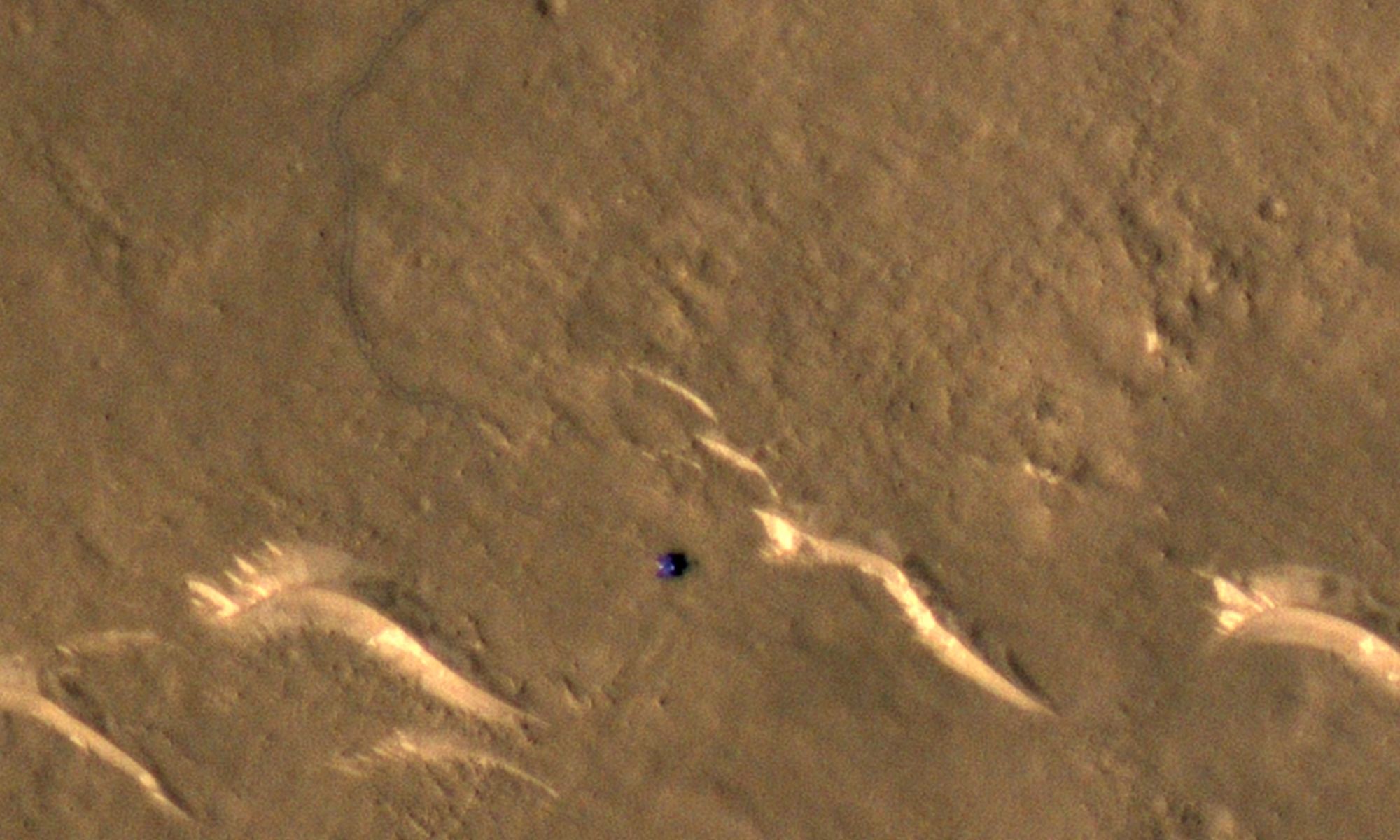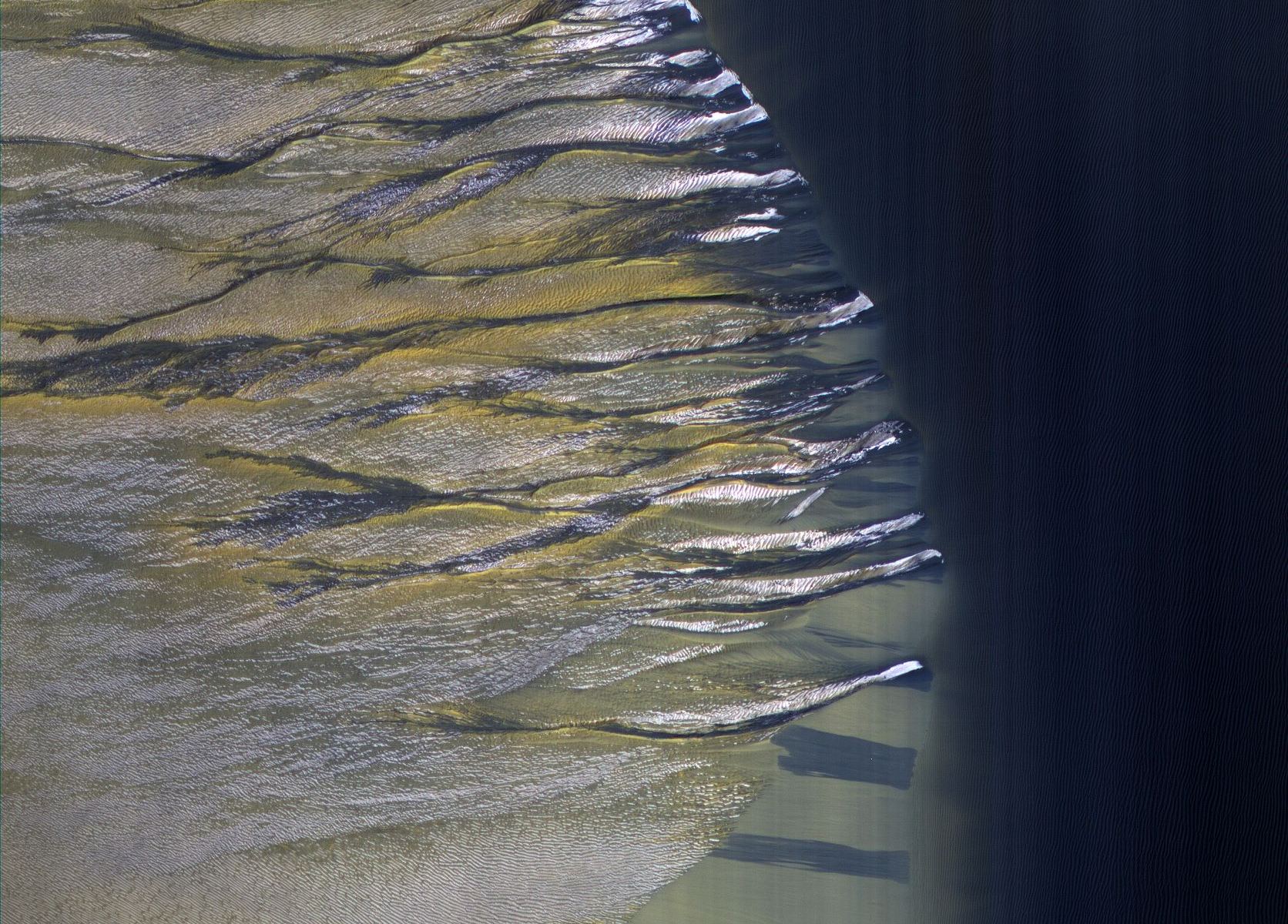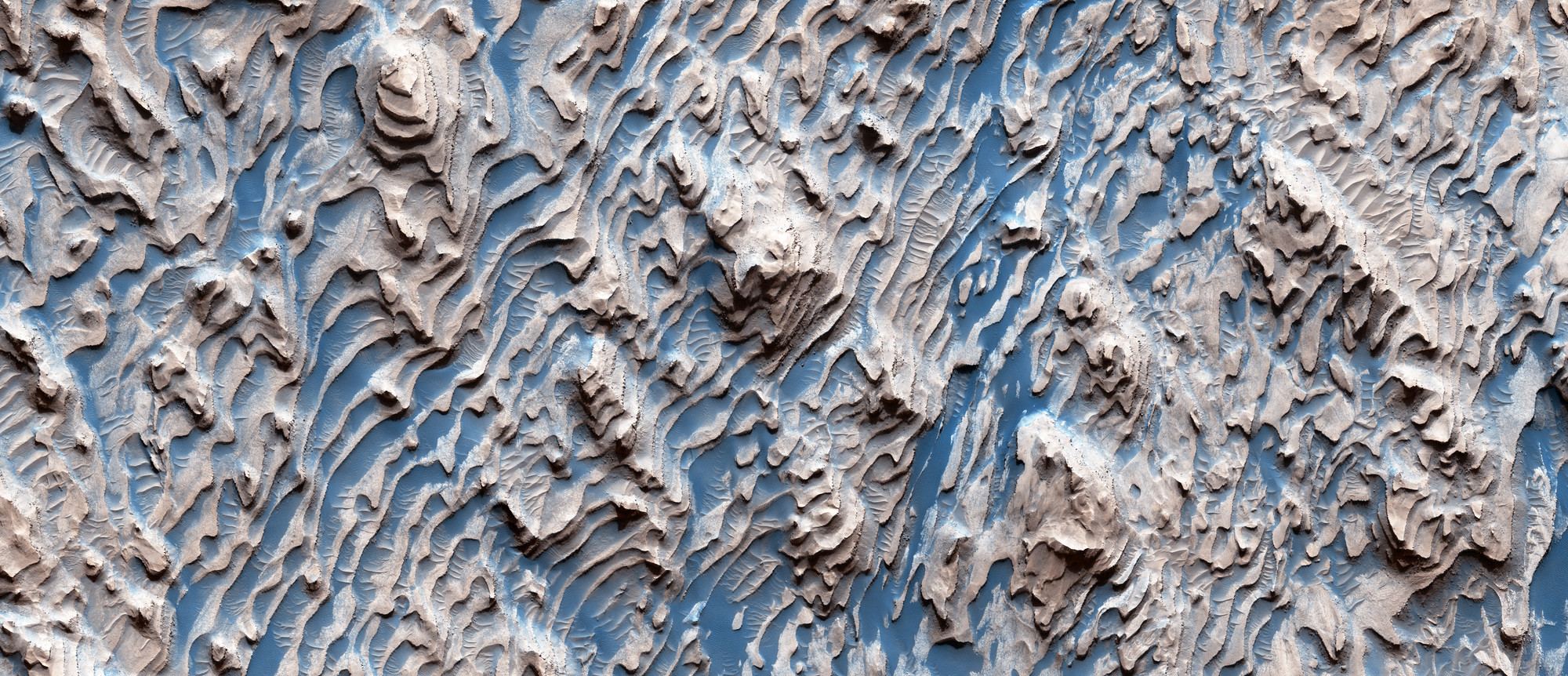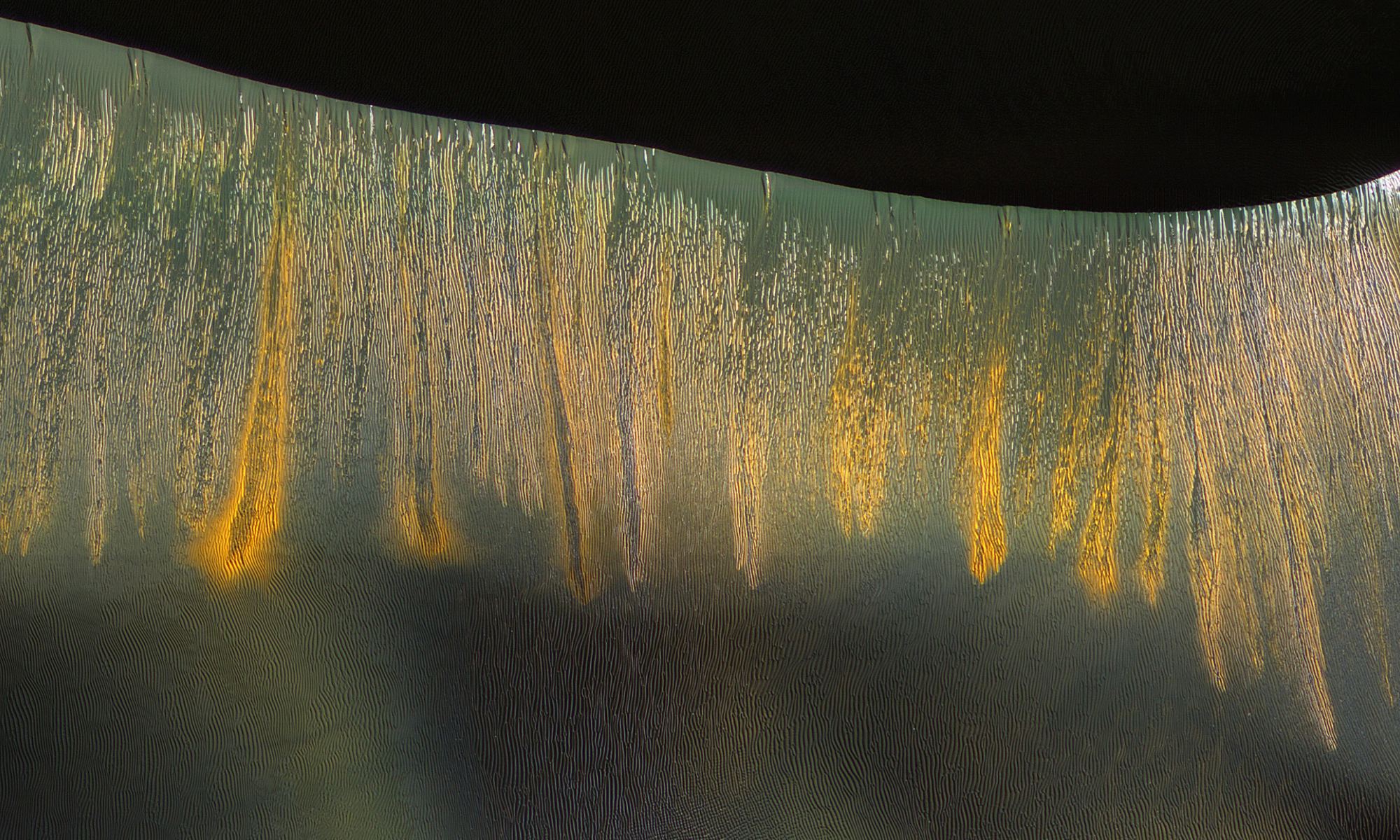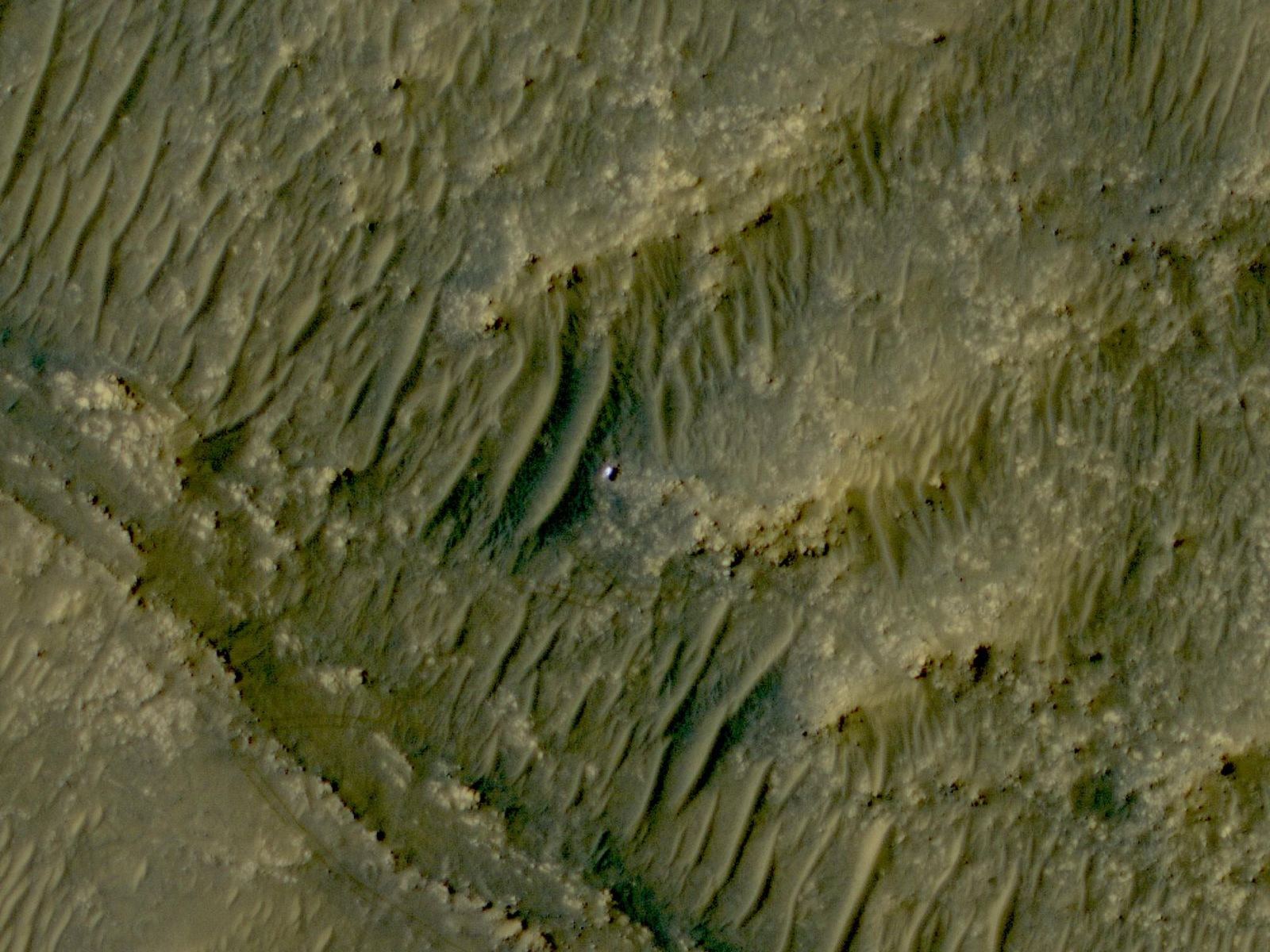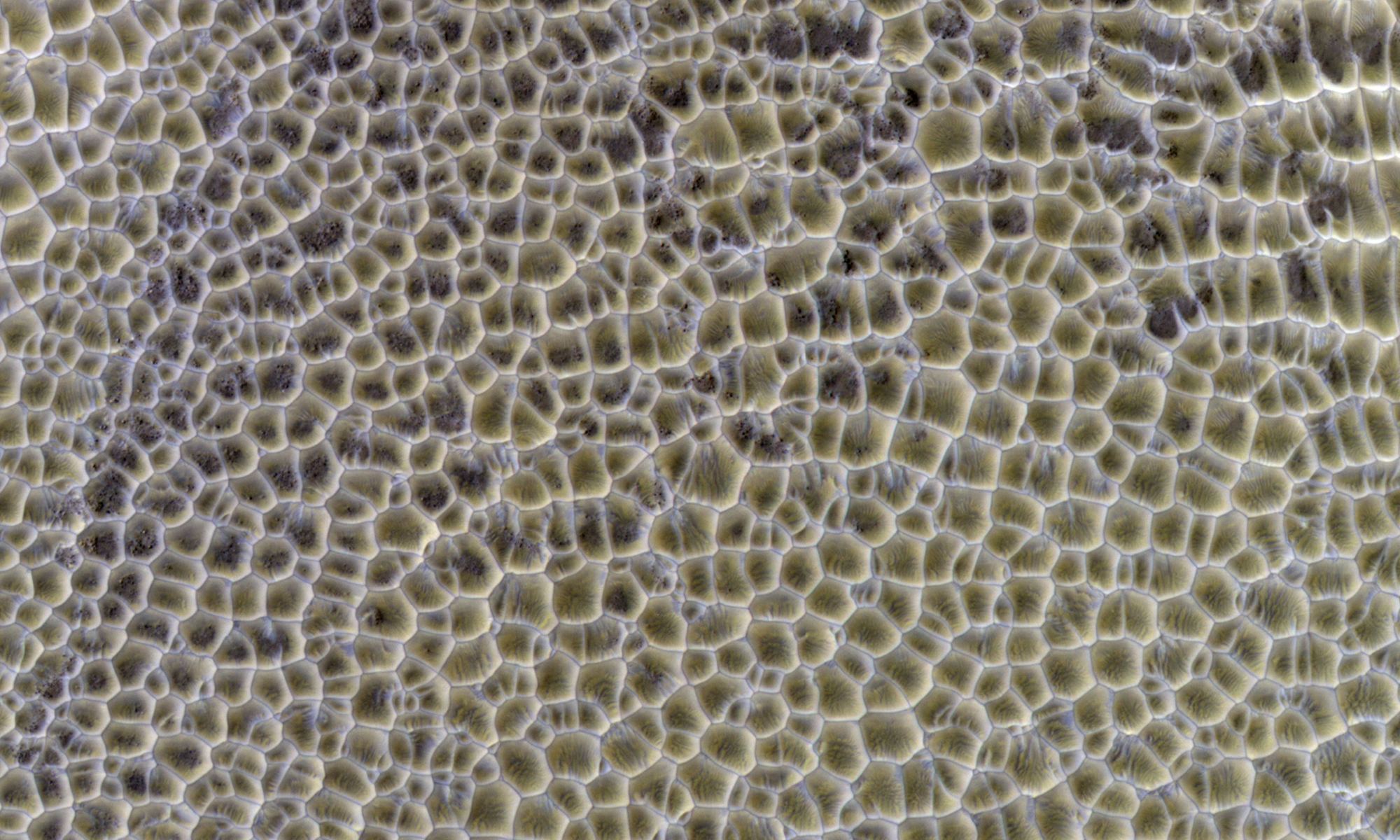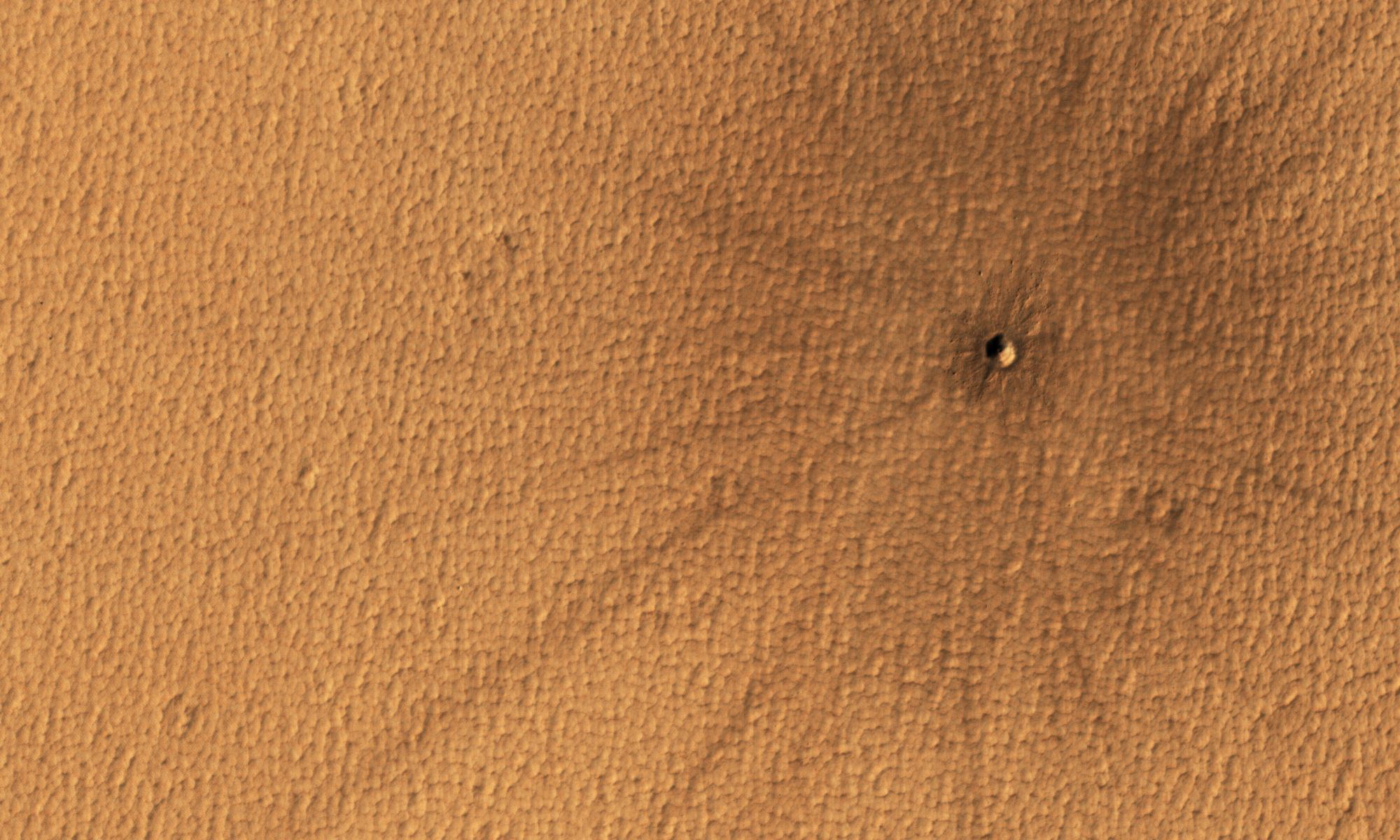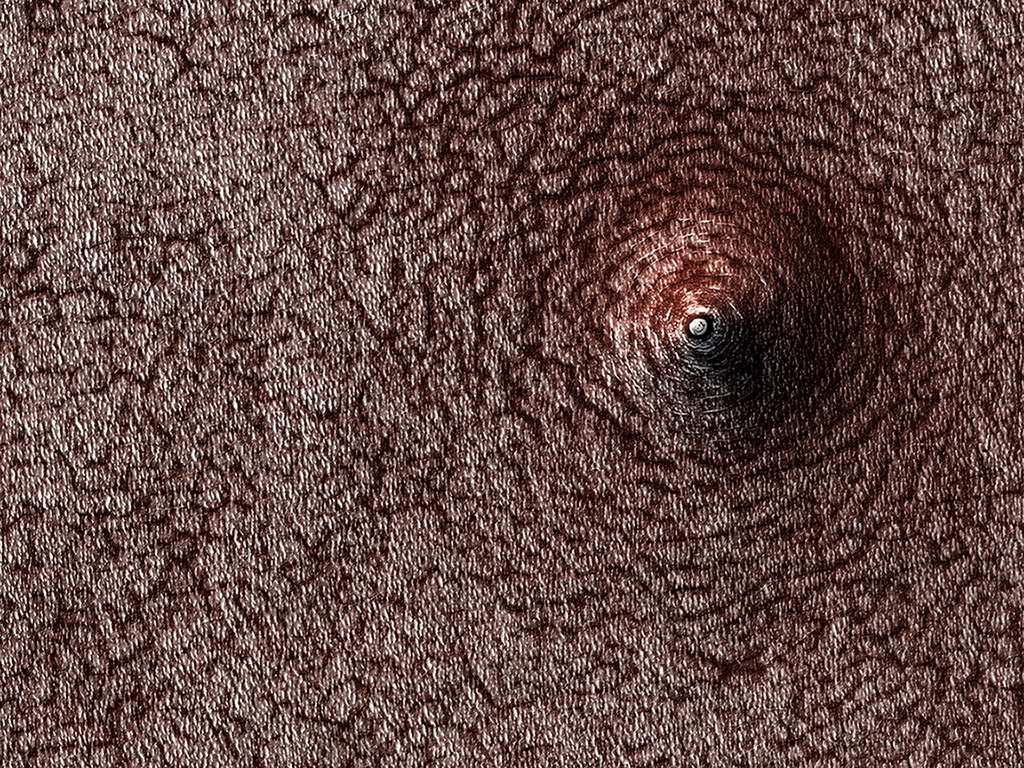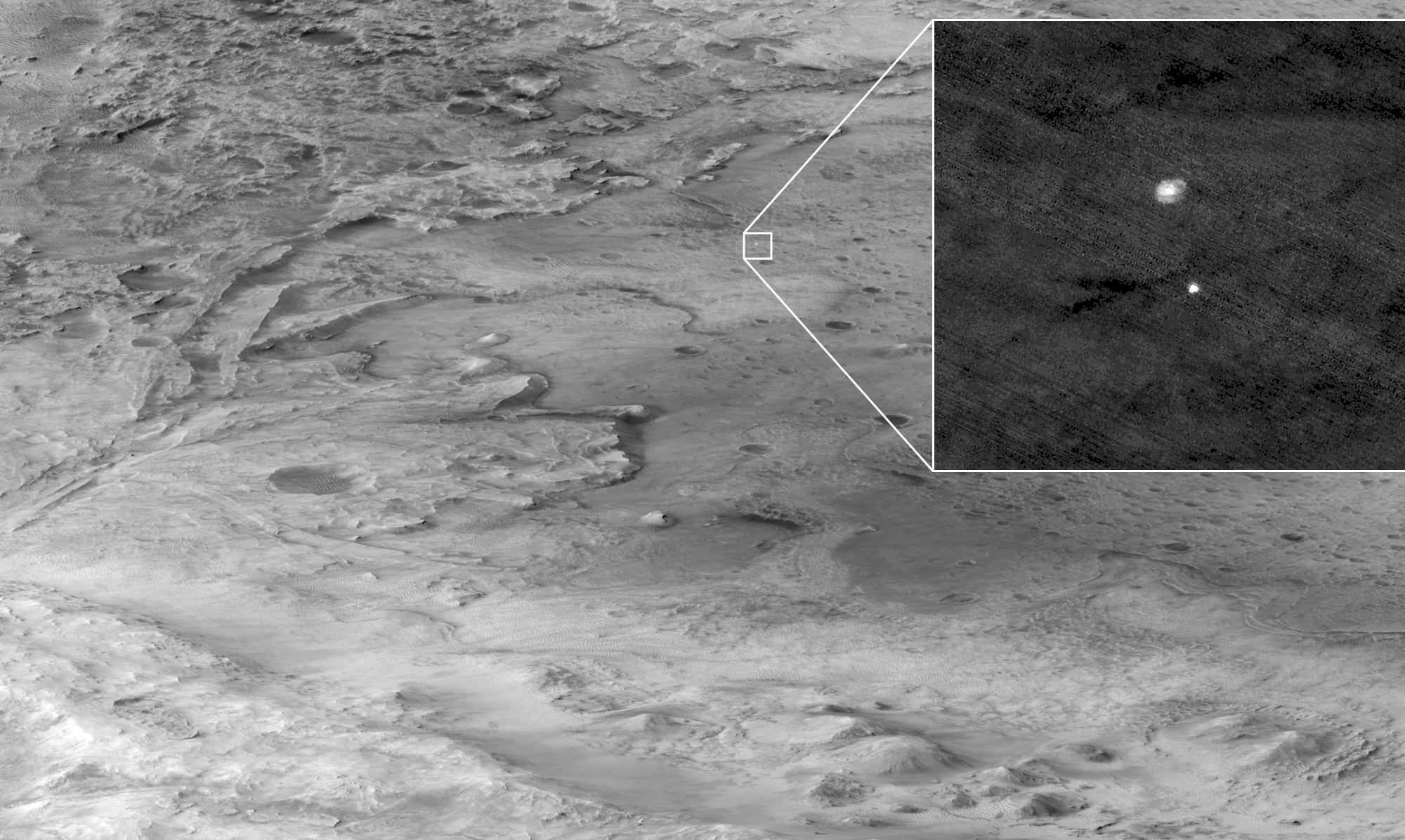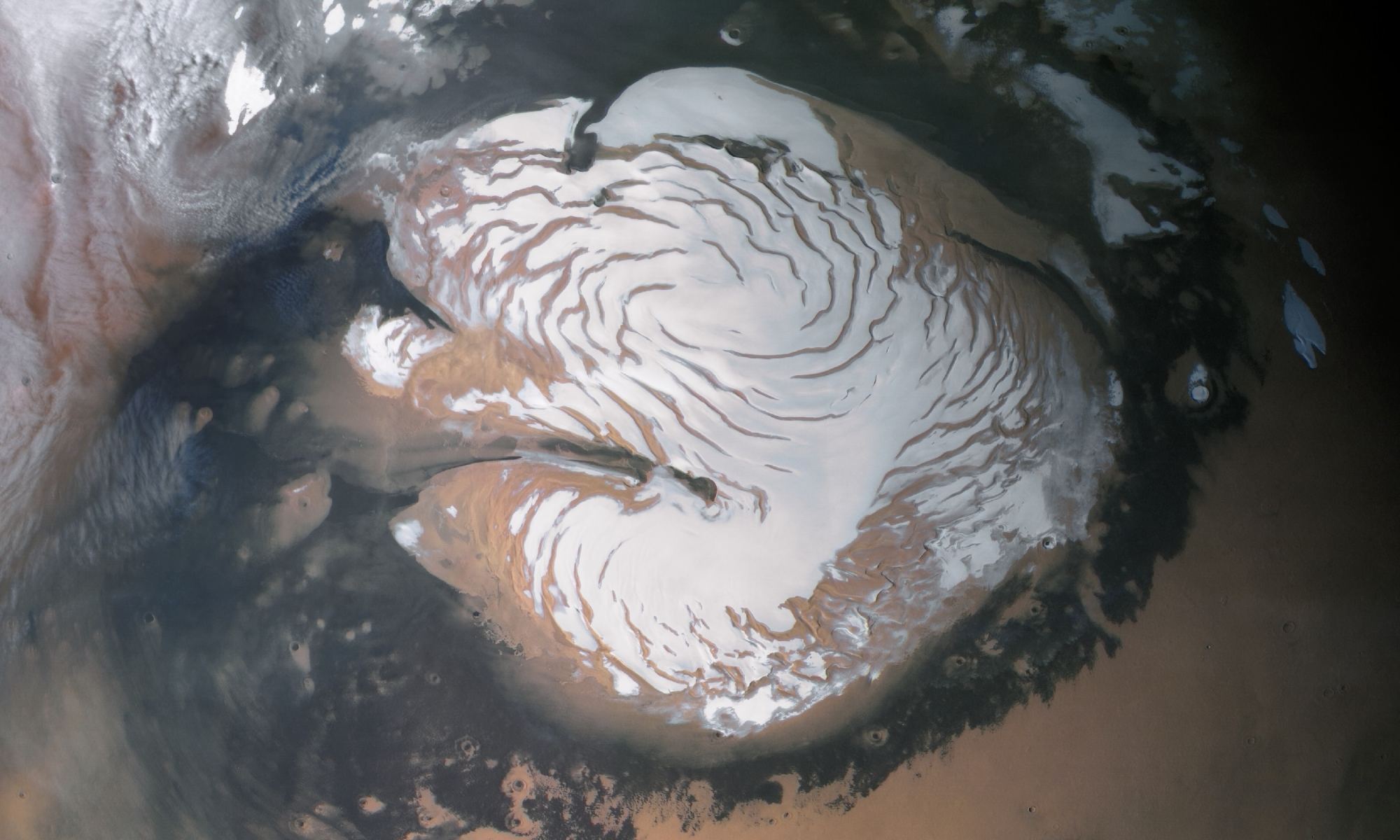China’s Tianwen-1 lander and Zhurong rover touched down on the Martian plain Utopia Planitia on May 14, 2021 after spending about three months orbiting the Red Planet. While the Chinese Space Agency has shared images of the rover and lander (including a cute family portrait taken by a wireless remote camera), NASA’s Mars Reconnaissance Orbiter has been following the rover’s travels from above.
Continue reading “Mars Orbiter Captures Images of China’s Rover From Space”Mars Orbiter Captures Images of China’s Rover From Space
